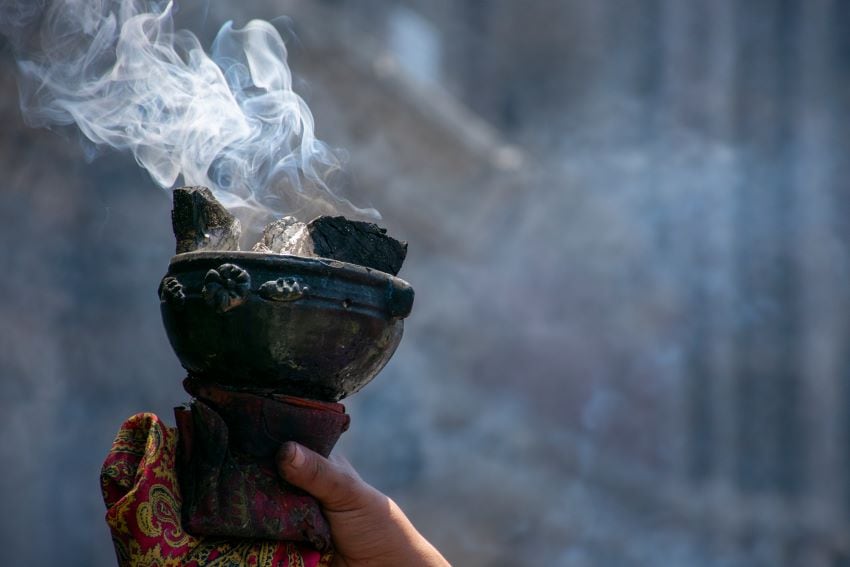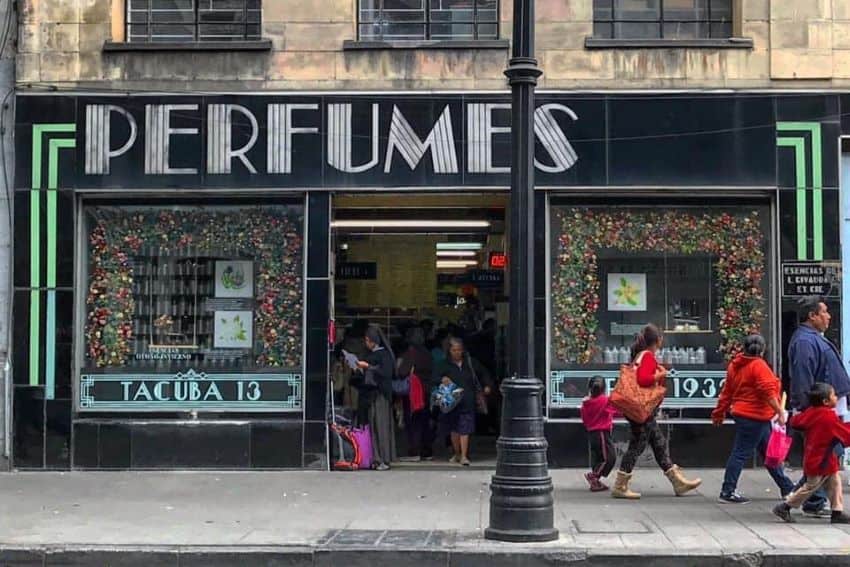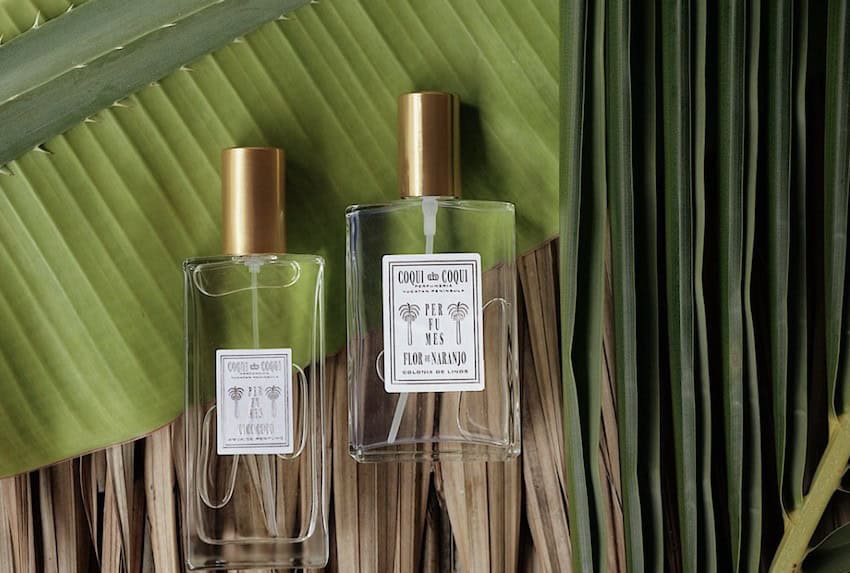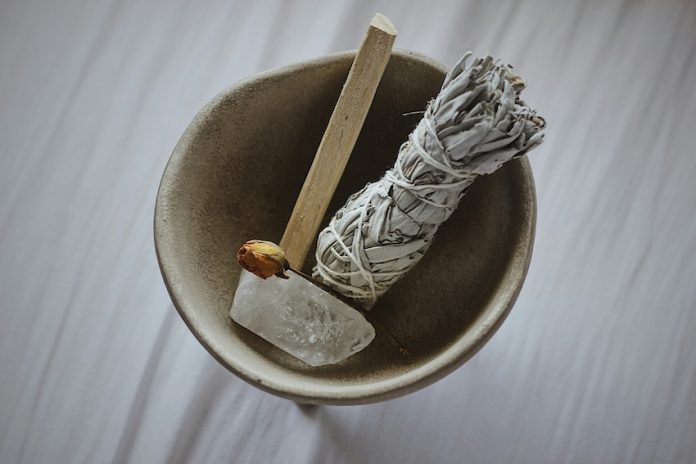Though perhaps not the first country one associates with perfume, Mexico, with its rich cultural heritage, has a profound relationship with scent that transcends the boundaries of mere olfactory pleasure. The importance of scent is deeply woven into the social, religious, and daily life of Mexicans, influencing their traditions, rituals, and cuisine.
In our exploration of aroma, we’ll take a journey through time, touching upon the realms of the divine, the agricultural, and the historical, as we explore the fragrant ingredients native to Mexico and the key events that characterize the nation’s often-overlooked story of scent.

Scent and Spirituality Among the Maya and Aztecs
We begin in Ancient Mesoamerica, among the Classic Maya and Aztec populations. Scent was closely associated with spiritual beliefs and practices, symbolizing the connection between the physical world and the supernatural realm. In a 1992 study of native peoples of Mesoamerica, anthropologist Jane Hill identified the widespread concept of a floral paradise present among Mesoamerican belief systems — a place of both ancestral origin and return. The paradisiacal afterlife is closely linked to the concept of the “breath soul”, symbolized by flowers or jade and believed to carry ethereal qualities such as life force, spirituality, and communication with the divine.
Though Mesoamerican cultures did not use the types of alcohol-based distilled perfumes we’re familiar with today, nobles likely used waters perfumed with soaked and pressed extracts of flowers or plants for personal hygiene, and as symbols of prestige and status. These types of perfumes were also used to treat the bodies of deceased Maya nobles, purifying them and staving off the odors of decomposition. Cinnabar and copal resin have been found in the funerary sites of Mayan royalty.
Aromas to Satiate the Gods

Aromatic smoke from offerings played a significant role in Mexica belief, attracting and “feeding” the gods. Rather than eating actual food, Maya spirits and deities are believed to consume the aroma of food, flowers, incense, or blood. Anthropologist Miguel Aguilera notes that contemporary Yucatec beliefs hold that the ancient ancestors, known as the hach uchben Maya, did not labor in the fields for maize but instead subsisted on the scent of flowers. Breath or wind, he explains, is not only the sustenance of gods and ancestors but also embodies their spiritual essence, akin to the fragrance of flowers and incense. Copal, in particular, was known as the “food of the gods,” though certain deities were believed to have preferences for specific scents.
It’s fitting that the Latin etymology per fumum at the root of the word “perfume” literally translates to “through smoke.” Burning copal incense and other aromatic plants like tobacco was a central part of making offerings and appeasing the gods, particularly for deities associated with rain, vegetation, and fertility. The aromas were believed to attract the gods and signify veneration. Depictions in codices show flowing elements and glyphs representing the aromas emanating from offerings of flowers and other sacred items. Both nobles and commoners likely burned copal and other aromatics daily in home rituals.
Spanish “Cologne-ization”
The Spanish conquest of Mexico during the 16th century led to the discovery of new aromatic plants and flowers in Mexico, which were then introduced to Europe. These included vanilla and cacao, which were incorporated into perfumery and significantly expanded the palette of scents available to perfumers. Conversely, the Spanish also introduced European aromatic plants and practices to Mexico. This cross-cultural exchange resulted in a rich fusion of fragrances and practices, shaping the evolution of perfumery in both regions.
Franciscan friars, in particular, sent to convert the Indigenous populations to Christianity during the 1500s, were asked by the queen of Spain to collect flowers, herbs, and exotic plants from their station on the Yucatan peninsula. The friars developed a catalog of unique scents and flora, the emulsions of which were exported to Spain for use in perfumes for almost 300 years.
Mexico City’s Street of Scents

A street in Mexico City’s historical center provides clues to the evolution of scent, ingredients, and perfume-selling in Mexico and beyond. Aptly nicknamed “La Calle de Los Perfumes,” Calle Tacuba is lined with shops offering everything from original proprietary blends to copies of famous colognes. Many of the shops also carry individual emulsions of ingredients, allowing you to create your custom blends of perfumes at an inexpensive cost.
During the Spanish colonial era, Calle Tacuba was known as one of the central commercial areas of the city, where Spanish settlers brought with them perfumes and fragrances from Europe, which were highly valued commodities among the colonial elite.
Today, the street also hosts a relative newcomer to the area- the beautifully curated Museum of Perfume (MUPE), housed in a stately 19th-century mansion. The space aims to educate visitors on everything from the history of perfume-making to the origins of global ingredients, and stories of famous perfumes and perfume-makers from all over the world. Also on display at the MUPE is an extensive collection of packaging and bottles from hundreds of luxury brands, from Balenciaga to Chanel, Moschino to Zegna. Through workshops, lectures, and interactive displays, MUPE fosters a deeper understanding of the intricate relationship between scent and society.
The Eau-So-Unique Ingredients of Mexico
Mexican perfumery traditionally utilizes a wide array of native scent ingredients, which are still in use today, albeit in a more modern context. The country’s biodiverse ingredients are sought after for their high quality and richness and are exported worldwide for use in the global perfume industry. The earthy aroma of copal, the tree resin used in spiritual rituals and as an insect repellent, is deeply ingrained in Mexican traditional and modern culture. The citrusy fragrance of cempasúchil, or marigold, is a staple on altars during the Day of the Dead celebrations, symbolizing the Mexican belief in the cycle of life and death. The sweet, warm scent of vanilla, originally cultivated by the Totonac people, is globally recognized and is frequently used as a base note in many fragrances. Cacao, the primary ingredient in chocolate, provides a robust aroma and is used in food, beverages, and aromatic blends. Another ingredient is the Yucatan honey, which lends a sweet, floral note to perfumes. Mexican lime, with its fresh and zesty scent, is often used as a top note in fragrances. The native Damiana flower, known for its strong and spicy aroma, is also used.
The Next Chapter: Mexican Perfumers on the World Stage

Competing on the world stage today, a handful of contemporary Mexican luxury brands are capturing the attention of discerning noses worldwide, bringing Mexican flair, distinctive ingredients, and artisanal talent to the forefront. Coqui Coqui, Arquiste and XINU perfumes are headlining the next chapter in Mexico’s aromatic anthology, in which their perfumers blend traditional Mexican ingredients with other exotic scents to create unique and complex fragrances.
The founders of the brands weave Mexican history and storytelling into the fabric of contemporary Mexican culture to bring novel stories and aromas to international consumers. These and other emerging brands are the unseen olfactory threads that bind the past to the present, the spiritual to the sensory, creating a unique tapestry that is as vibrant as Mexico itself.
Monica Belot is a writer, researcher, strategist and adjunct professor at Parsons School of Design in New York City, where she teaches in the Strategic Design & Management Program. Splitting her time between NYC and Mexico City, where she resides with her naughty silver labrador puppy Atlas, Monica writes about topics spanning everything from the human experience to travel and design research. Follow her varied scribbles on Medium at https://medium.com/@monicabelot.
